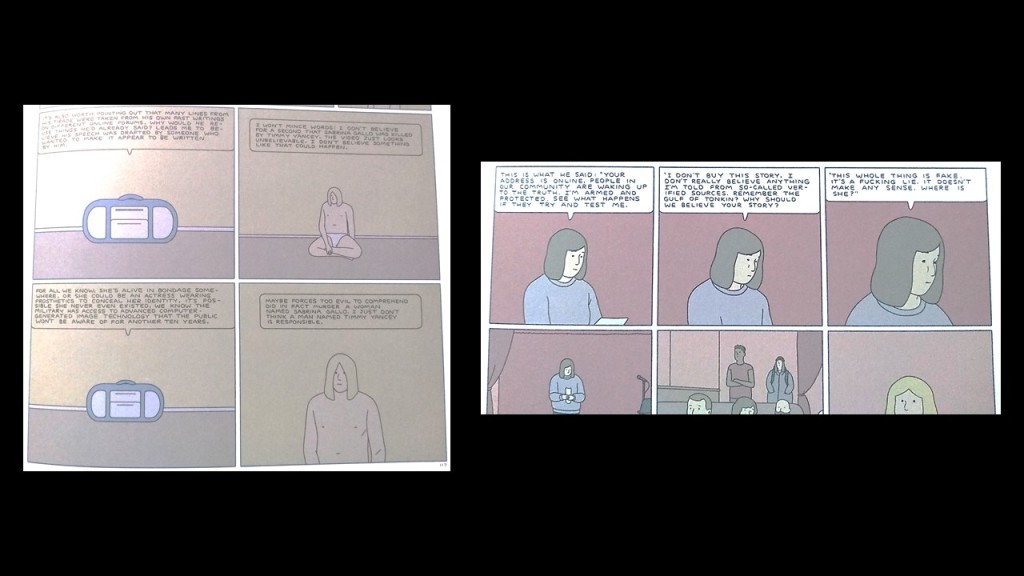The writing process for my halfa kucha was similar to writing a paper. I brainstormed preliminary ideas about how trauma and recovery were portrayed in the two books I chose. I started with one book and then it was easier for me to directly compare the other book to those points. After I had my main points, I wrote a script for what I wanted to say in each subsection. There were two big subsections, the two themes about society’s view of the characters’ trauma, and within each subsection there were three detailed section, one for each book and one related to the quotes from Herman. I went back through, timed myself, and cut down significantly on the script so that each “paragraph” only took up 20 seconds or less. I normally write a lot of fluff because it sometimes takes me a while to get to the point depending on the writing piece I’m working on. I was surprised I didn’t have a lot more to take out when editing.
I chose visuals after writing my script. It was easier this way because I only had to look for frames that aligned with what I had written. I think it would’ve been personally harder to do it vice versa. I tried to choose scenes that the audience would recognize and wouldn’t take too much time to read. I overall didn’t mind this style of presentation. The time limit helped me cut down on what I wanted to say in order to get to the point and be concise. While giving the presentation, I didn’t like the time limit because it felt rushed and naturally, I ten to take a longer time to think about what I want to say before talking. There were points in my presentation where I had to forgo important points that I wish I had time to bring up or clarify. I liked how other people’s presentations were even more concise and really easy to follow although I think it would take a lot of time and editing for me to cut down further in my writing.


















